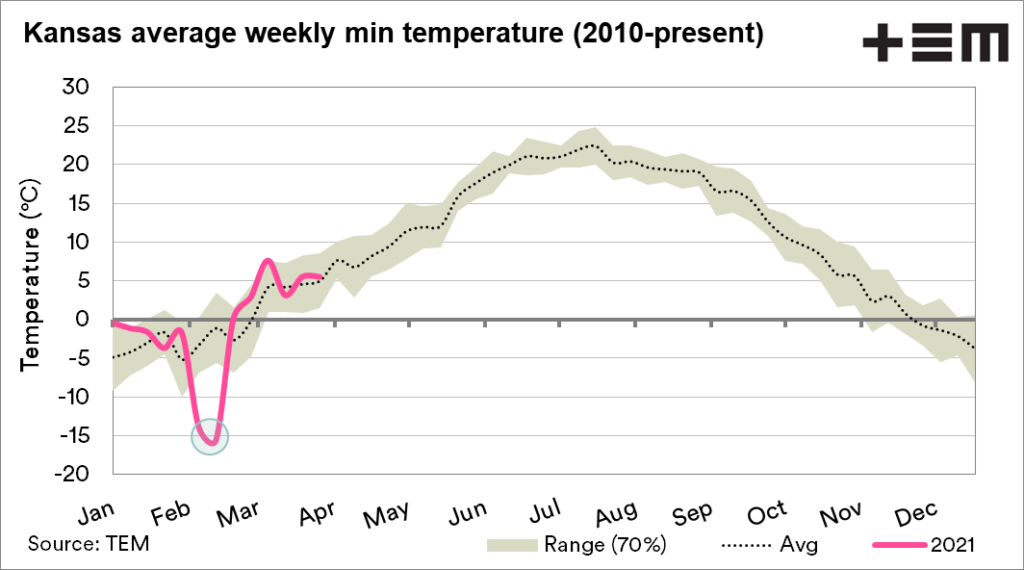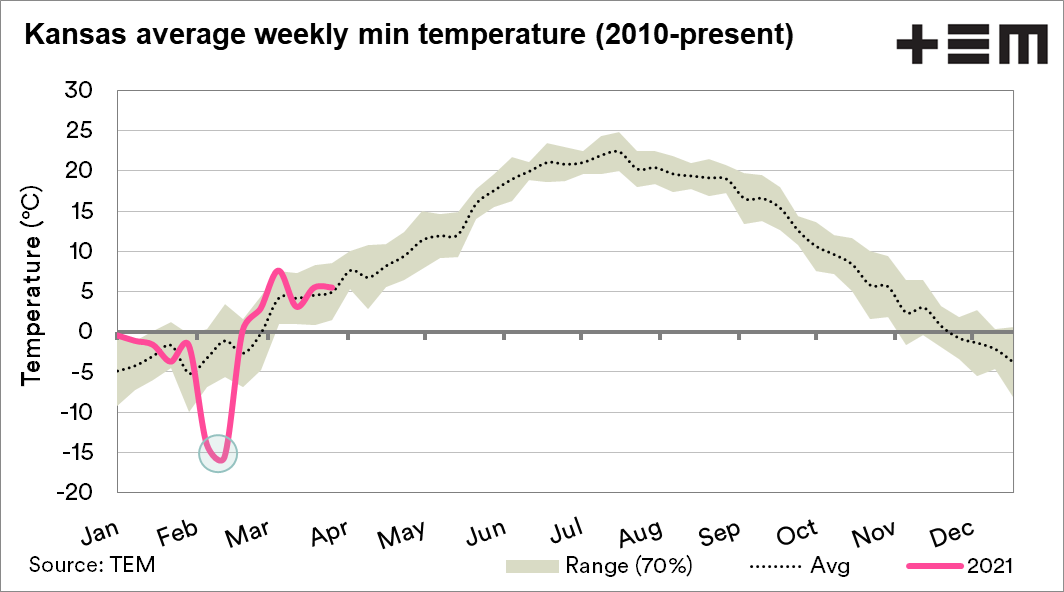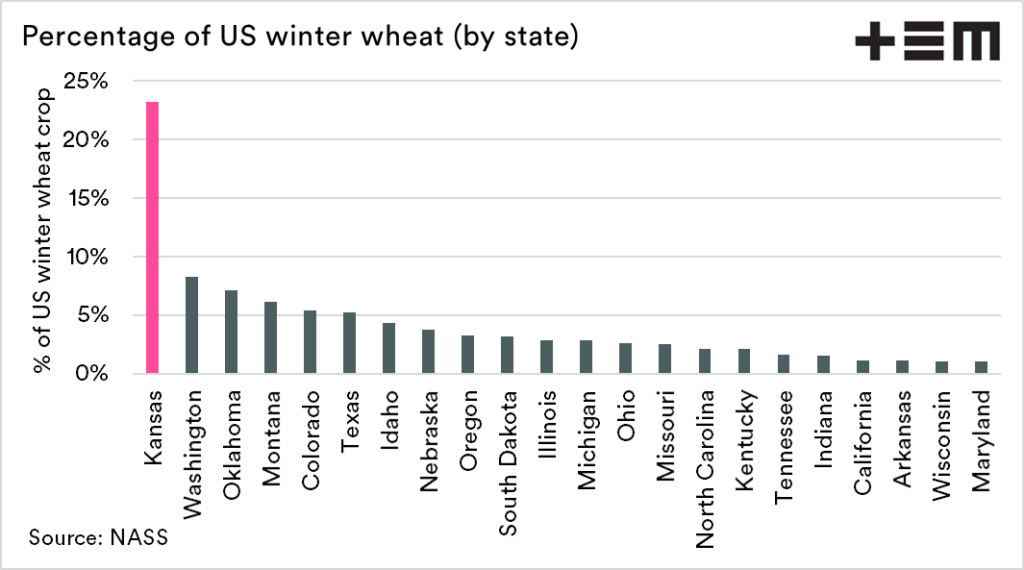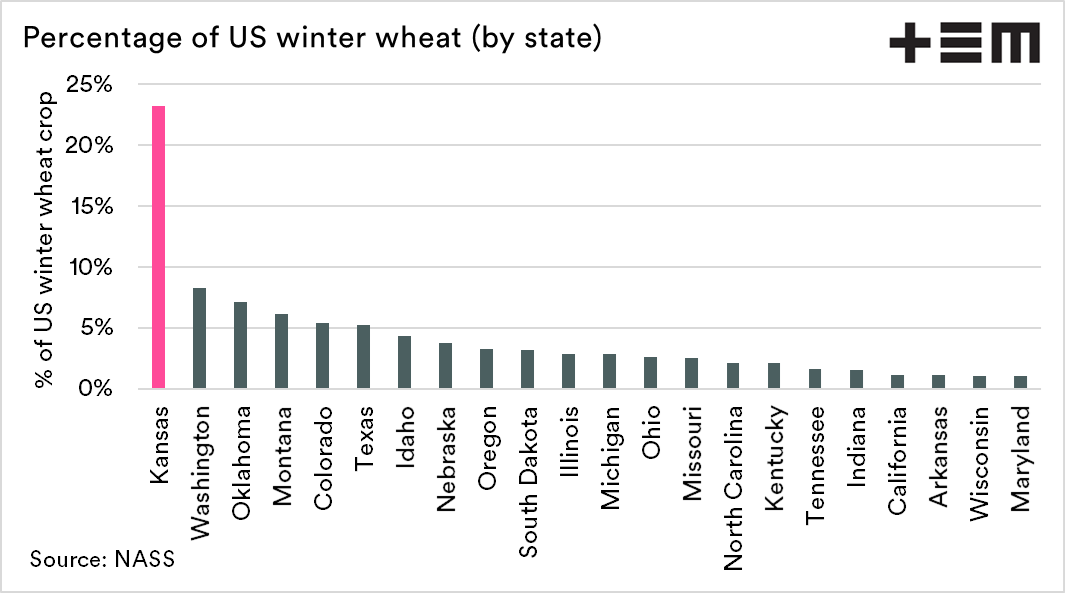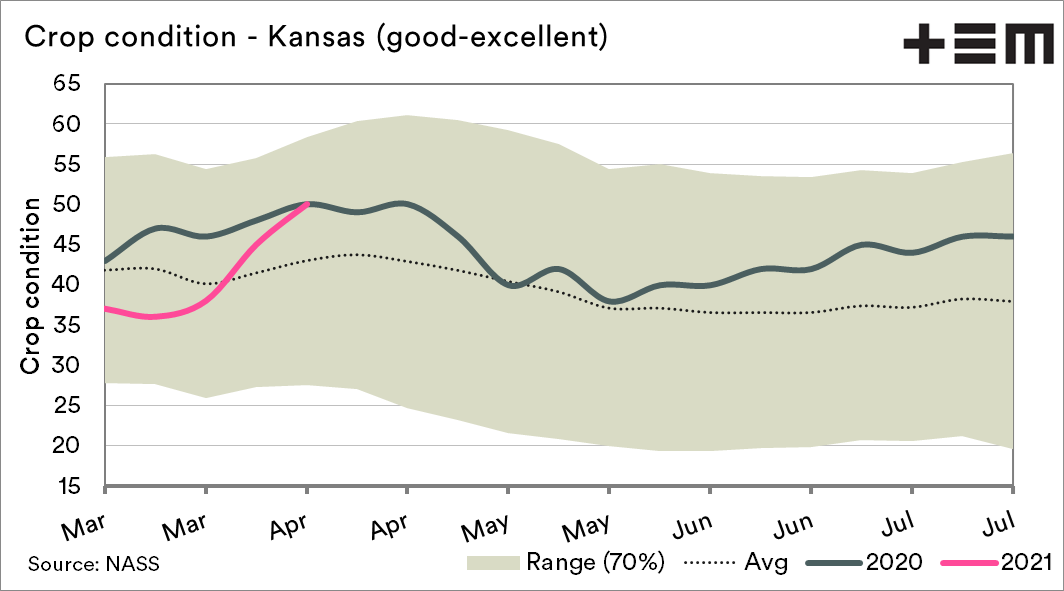We’re still in Kansas
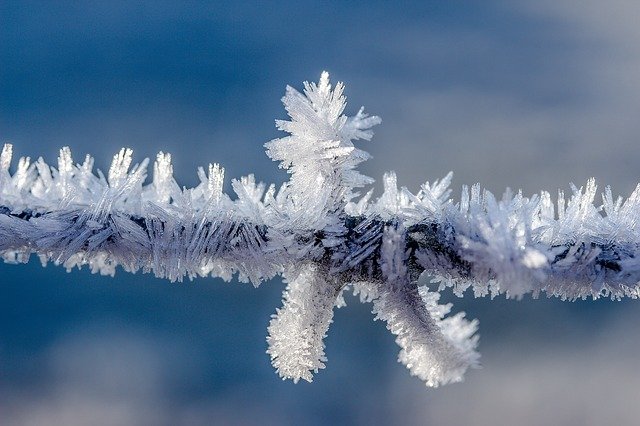
The Snapshot
- Weather events in the US impact our pricing; therefore, it is worthwhile keeping an eye on conditions.
- A severe cold spell impacted large tracts of the US in February.
- We warned caution, as wheat is a hardy plant and can surprise. It was appropriate not to bank on a disaster and await the crop condition reports.
- Kansas is overwhelmingly the largest producer of winter wheat in the USA.
- The condition of wheat has improved since early March.
- The current good-excellent percentage is 50%, which is the same as this last year.
The Detail
We are starting to get into the northern hemisphere weather window. April is when large parts of the world come out of hibernation from winter and when real solid news on crops starts to get released. As an analyst, this is good as it gives us better data to work with.
In recent years, the United States has lost some shine on wheat export markets to the former soviet nations. They do, however, remain an important market for setting global pricing. A crop issue there will have impacts on international pricing, and therefore what we get paid locally.
One of the important pieces of data which is released on a weekly basis is the crop condition reporting, which we will briefly look at today, particularly in relation to Kansas.
In February, I wrote about a very cold snap which created a lot of angst and a short term boost to wheat pricing.
There was some concern that the weather’s severity would significantly downgrade the crop’s condition. This makes sense; surely you can’t drop to those frigid levels without the crop being destroyed?
At the time, we suggested caution, as wheat is a hardy crop, and can surprise with its resilience. In reality, we have seen many (almost annual) winterkill events which have excited the market for a few days.
Why look at Kansas?
The winter wheat crop in the US is dominated by one state, and that is Kansas. The chart below shows the average share of each state’s national winter wheat crop over the past decade.
Kansas overwhelmingly takes the crown as the wheat king, with 23% fo the national crop, significantly higher than second-place Washington at 8%.
Therefore, the volume produced in Kansas means that any issue will have a larger impact on the national production than any other state.
Crop condition
In February, it was important not to hold off on selling whilst banking on a US disaster. It was a case of hoping for one, but that it wasn’t guaranteed at that point.
The crop conditions report as we move into April were going to be where we get a really good signal on how things are set up.
The crop condition data is laid out in five categories and the percentage of the crop in each category. These categories are:
- Excellent
- Good
- Fair
- Poor
- Very poor
The focus is largely on what percentage is in the combined good-excellent. In March, crop condition reports started off with a poorer sentiment. They have improved, with currently 50% of the crop in good-excellent.
This places the condition as the same time last year and a sign that the winter kill did not have as big of an impact as expected. The majority of the rise has come from a fall in poor and very poor conditions.
This is a good lesson that we should never underestimate the ability of wheat to make it through a tough time!

